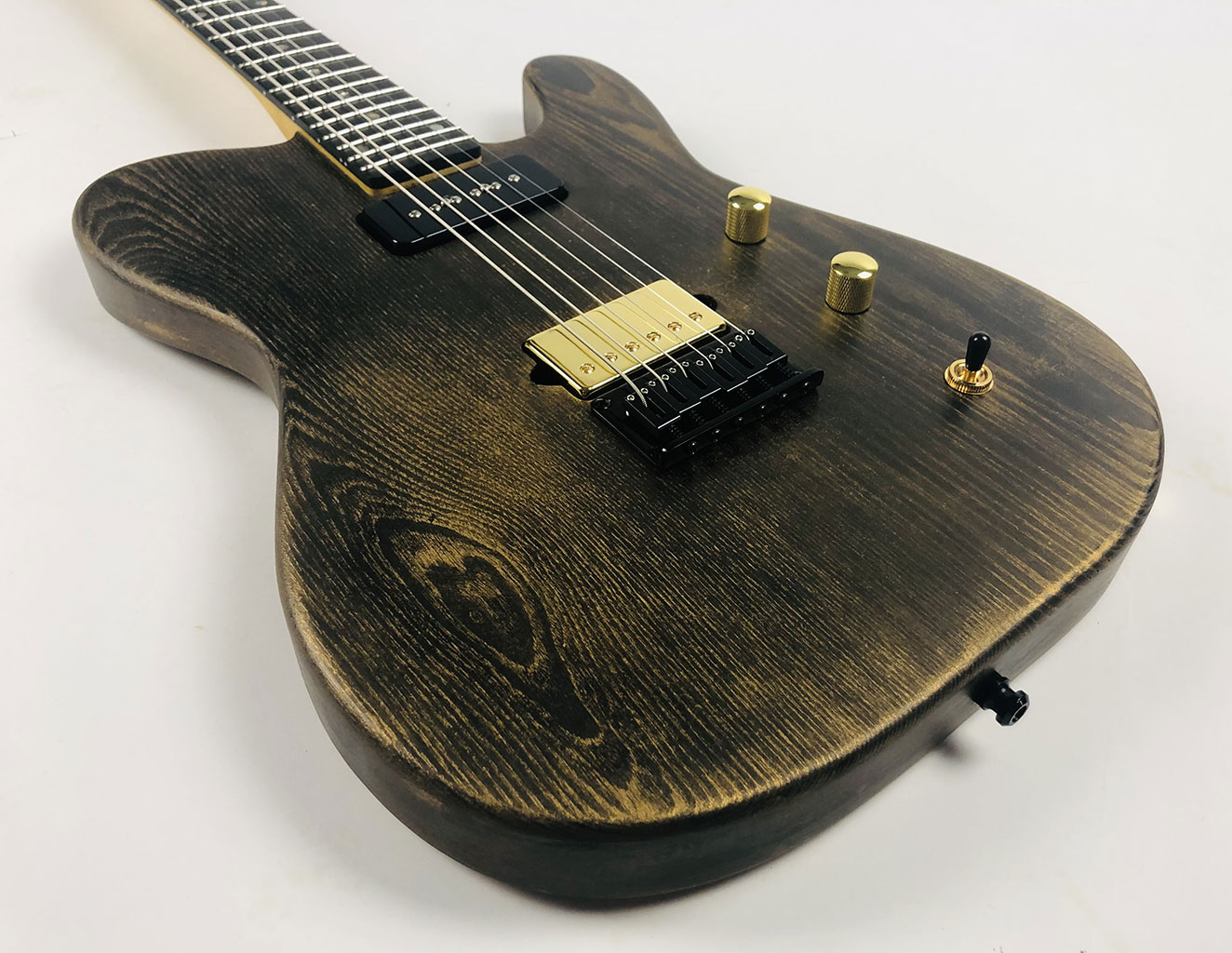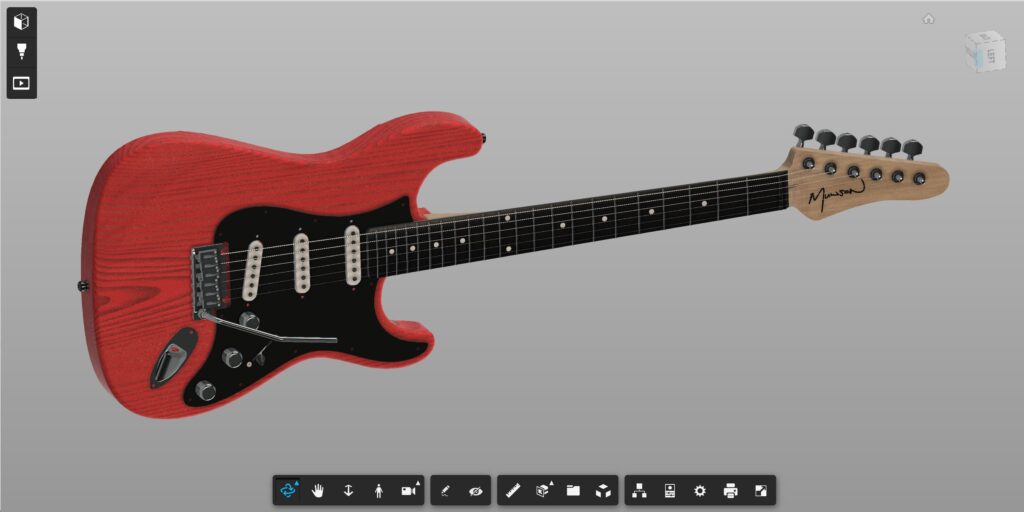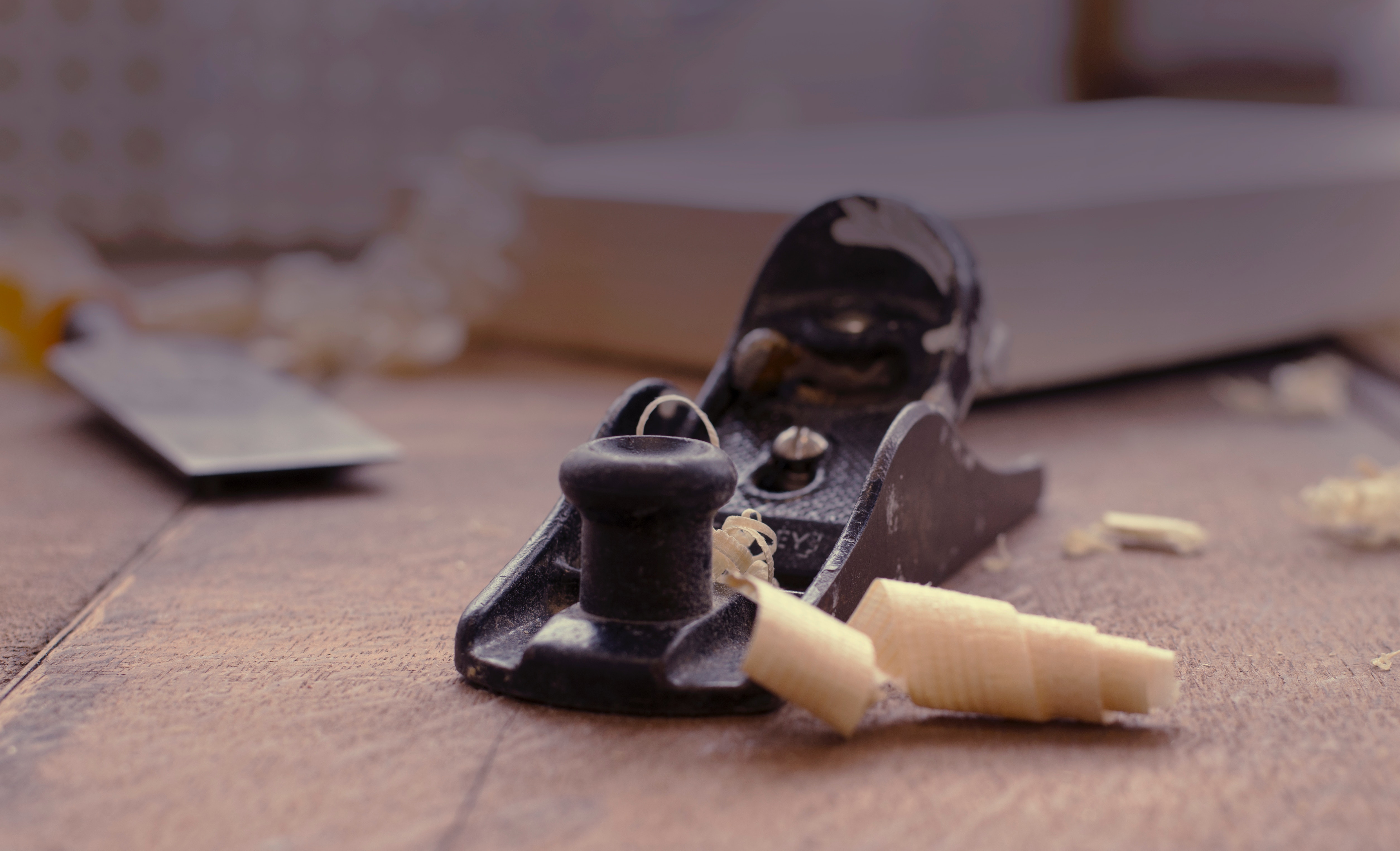
Custom Electric Guitar Buyer’s Guide
So you are thinking about commissioning a custom guitar, but don’t know where to start. There are loads of websites with fancy online builders, but they are often more than a little daunting, with so many options to choose from. You might have an idea of what you want, but can’t quite define it. This article will guide you along the whole process of how to commission a custom electric guitar from how to choose your luthier, how you can work with them to translate your vision into reality, and all the stages along the way from concept to concert.
- How To Choose A Luthier?
- Commissioning A Custom Guitar – What To Expect
- Custom Guitar Experience
- The 7 Steps To Commissioning Your Custom Guitar
- Is The Journey Over?
How To Choose A Luthier?
There are two main options for initiating the process to build your new guitar. You can use an online guitar builder to send a form to a luthier, or work with a luthier in person.
Use An Online Guitar Builder
This is something most often used by the big factory brands. You can use an online configurator to decide what you want in your guitar. If this is the case, simply select your options from the list provided and enter your payment details. Sit back and wait for your new guitar to arrive. Sounds easy, right?
Buying online in this way is really good if you want a specific guitar that’s slightly different to the norm. But it won’t work if you really want something special. Commissioning a custom guitar is your opportunity to create a very personal instrument. And the best way to do this is to work with a luthier, an actual person, to turn your ideas into the best guitar for you.
Talk To A Person
If you want a more personal approach then talk to a luthier. They will use their experience to translate your requirements and desires into the best guitar for you. Due to the nature of the design and build process, you and your luthier will spend time talking about your build throughout the process.
They will interpret what you want into a design and guide you through the options that are the most appropriate for you. In my experience, clients often can’t describe what they want, so it’s my job as their luthier to help them verbalise or visualise what they want.
If you opt for the second option, then this article will give you a flavour of what to expect. (We also do use an [online configurator], but as one starting point to help you clarify what you want and don’t want.)
Commissioning A Custom Guitar – What To Expect
It is often said that it’s not the destination, but the journey that’s important. The good news is that commissioning a custom electric guitar is the best of both worlds. The custom guitar experience is exciting and ends with you receiving a new guitar that you can enjoy for a long time.
There are a lot of different starting points. You might have really specific ideas for a new guitar. You might have a thousand ideas. Or you might not know what you want, but the instruments you have are not quite right. So how does it start? With an initial conversation where you and your luthier get to know each other and for them to find out what you are looking for.
I find the best way to start the conversation is by asking my clients three questions.
- What type of music do you play and what sound are you looking for?
- What are the things you really like about guitars you have played?
- What style of guitar are you looking for?
I ask these questions as part of a conversation to help them to articulate why they want a custom guitar and how they want it to feel and sound. They also help me, as the maker, to understand what the client needs, and can help me guide them along the journey.
What Type Of Music Do You Play And What Sound Are You Looking For?
This helps your luthier to understand what you play and how you like to play it. You might play on stage and be looking for a specific sound. Or you might play at home or in a studio and want lots of tonal options. Different sounds often are best served with different materials – even your fret wire might be different based on your style of music.
What Are The Things You Really Like About Guitars You Have Played?
There are probably a hundred different things you liked about other guitars you have, or have played. Share these with your luthier as it will help them to understand what you like and dislike. While you might not want to include all of those things in your new guitar, there might be some ‘must have’ that you need to let your luthier know about.
What Style Of Guitar Are You Looking For?
Here is where we talk about the look of your guitar. Do you want an instrument inspired by a known shape, such as an S-style or LP-style, or do you want something completely original.
The luthiers who really take the time to understand you and what you’re looking for will create the best guitar for you. Take the time to build a relationship with your luthier. After all, you should be communicating regularly throughout the project.
Ask your luthier about situations where you might want to change things along the way. Often as you learn more about the process, new ideas crop up. A good luthier will be able to advise if these can be implemented and any cost implications.
Custom Guitar Experience
We affectionately call the process of commissioning a custom guitar the Custom Guitar Experience. Ultimately, it’s your guitar and we want you to experience the entire process of bringing your dream guitar to life. While you might not be able to actually feel and smell the wood during the building process, you will be able to follow along via videos and progress photos. And you’ll be involved with the design decisions, as if you were right in the workshop.
Clients tell me they really like to see how some blocks of wood turn into their guitar. It gives them a sense of involvement in the process, and so it should – because they are.

The 7 Steps To Commissioning Your Custom Guitar
At Munson Guitars, we want to make the process of how to commission a custom electric guitar as simple as possible for our clients. At the same time, we want to give you as much freedom as possible to create a custom guitar that suits you perfectly. We created our own 7-step process for creating a new custom guitar. We’ll take you on the journey and guide you through the various aspects and decision points along the way.
And while other luthiers may follow a similar structure, our experience is designed to bring you into the workshop (virtually) so that you’re with us every step of the way.
1. Design Brief. This is where your luthier will turn your initial conversions into a design brief with a detailed specification that covers every aspect of your new guitar. They will then cost out all the elements and send you a quotation. Accepting this is the first step to owning your new custom guitar!
2. Design. Your luthier will create an initial sketch, followed by a 3D CAD model of your new guitar. You can view the model using a 3D portal where you can get to see what your new guitar will look like for the first time. This is where, if there are any big changes, they can be made now. Once you agree to the design, the build can begin.

3. The Build Process. Each instrument is built by your luthier, using a blend of traditional skills and some of the latest tech available to ensure a quality instrument. You will receive regular updates during the build process so you can see the development of your guitar. It is during this stage, that the electronic controls are built, the pickups are made, and the hardware is installed.

4. Colour & Finish. Once the neck and body are shaped, carved and sanded, they are now ready to have the colour and top coats of finish applied. Now that you can see the guitar together and how the grain of the wood flows, you can finalise your choice of colour and finish. We will test your colour choices so you can see what they look like, before they are applied to the body or neck so that your guitar looks just like you imagined it.
5. Assembly. This is where the various elements of the instrument come together. This is the first time the separate parts become an instrument. At this point, it is left to rest for a couple of days while it gets used to the idea of being a guitar (and for the wood to settle).
6. Final Inspection. We have a quality control process which ensures every instrument meets our high standards. A key part of the QA is that the playability is tested. As such, we play every guitar to ensure it plays as well as it looks. Your guitar will be set up in your desired tuning and gauge of strings. Your guitar is then carefully packed and shipped to you.
7. Unboxing. Once your new guitar arrives you will be eager to open the box to reveal your guitar that you have had a hand in designing, and you won’t have seen the finished instrument in all its glory.
BEFORE you open the case, leave it closed for 12-24 hours for the guitar to slowly acclimate to its new surrounding. Sudden changes in temperature or humidity are generally not good for instruments.
Life As A Custom Guitar Owner
Open the case and lift your new guitar! It should be ready to play out of the box (in standard tuning), but it never hurts to check. Familiarise yourself with the instrument, its controls and setup, and get to playing. And don’t forget to send us some photos of you and your guitar in action. If there is anything you are unhappy with please let us know immediately so we can sort it.
Don’t ignore the case candy. Take care not to lose any of the swing tickets or documents in your hurry to play your new custom guitar. They are an important part of the provenance of your instrument. There’s no need to register your instrument for warranty as we will have taken care of that for you already.
Once you have had time to play your new guitar, please take a moment to post a review and your unboxing experience. Whether you’ve bought a Munson Guitar, or from somewhere else, any boutique luthier will be helped by your reviews and kind words.
Is The Journey Over?
We pride ourselves in creating a great commissioning experience. It’s your guitar and you’ve chosen to create something unique – so it’s only right that you are along with us for the whole journey. But building your new guitar is only the first step. You’ve got a lifetime to get to know your personalised instrument.
And who knows, you might like the experience and your new guitar so much you decide to get another! We’ve got some tips to help you determine the best time to get a new guitar. Or you could check our range of custom shop and bespoke guitar options.
Keep in Touch
Stay up to date with the lastest news and offers from Munson Guitars.
